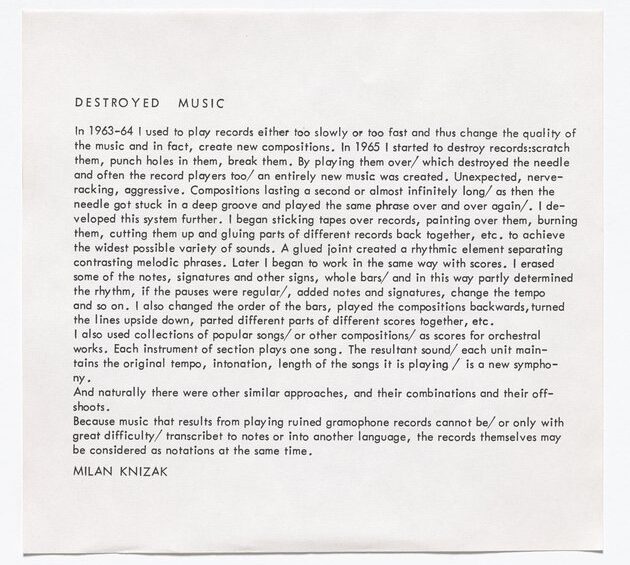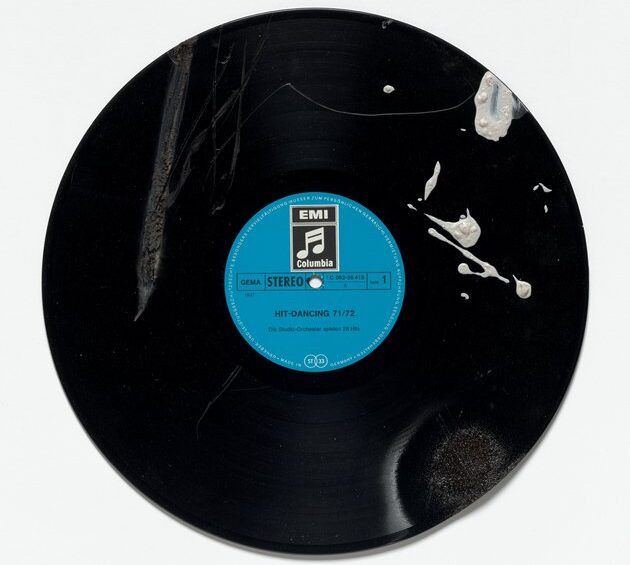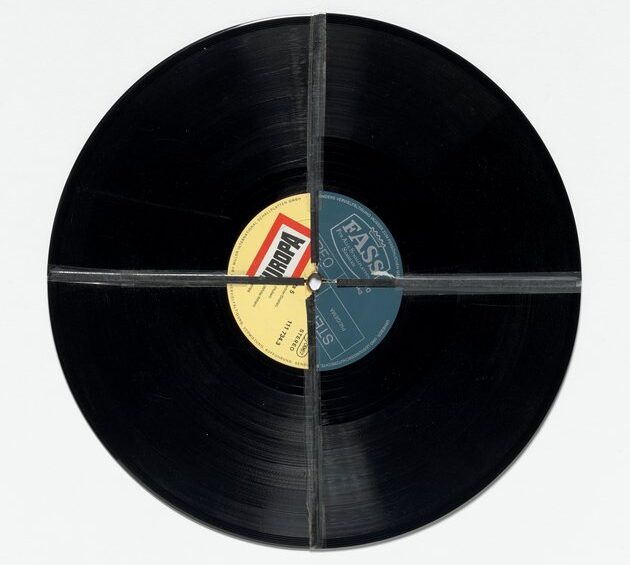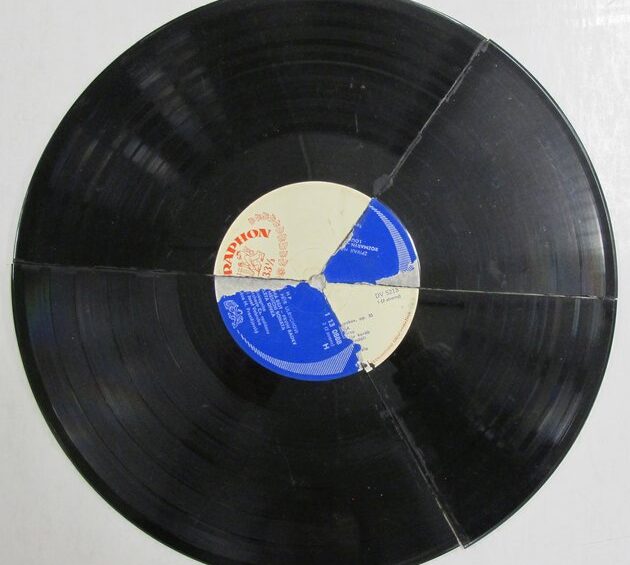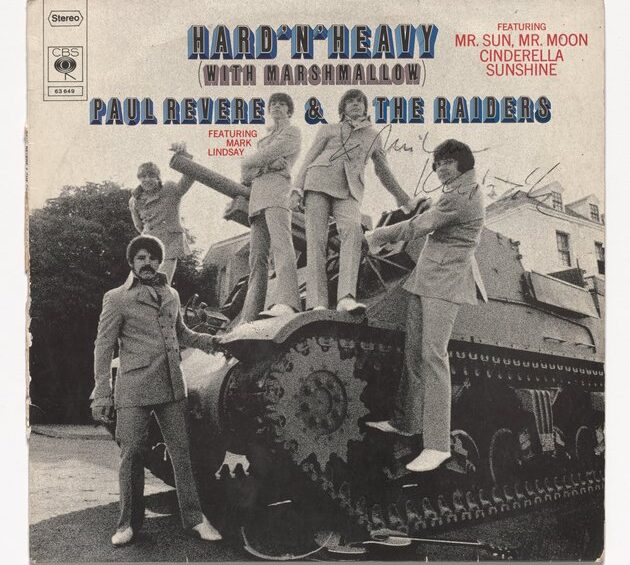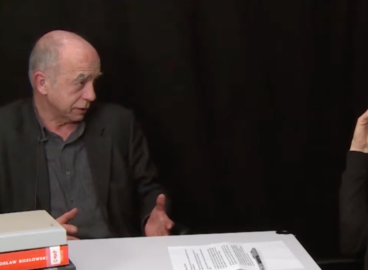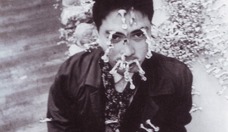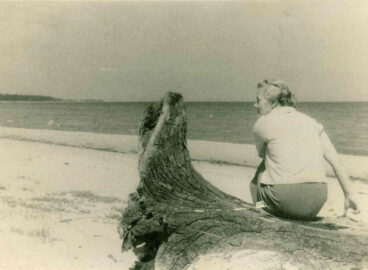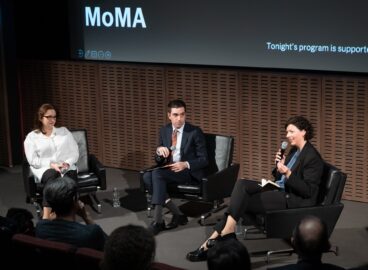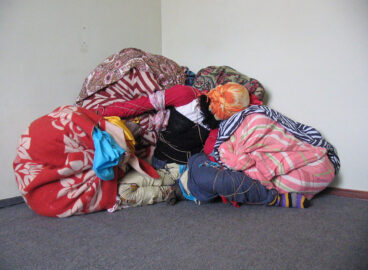Inherent to sound recording and distribution technology is not only the possibility of storing and reproducing any given acoustic event, but also a correlating tendency to make incidental and accidental elements—those which are not considered part of the music recorded—constitutive elements in the sound of a recording. This paradoxically essential surplus, as David Grubbs observed in his book Records Ruin the Landscape: John Cage, the Sixties, and Sound Recording (2014), partially resides in the nuances—such as the particular tuning of an instrument or a brief flaw in the sound or performance—that are preserved in a recording and reveal themselves upon repeated listening, and would likely go unnoticed in a live performance.1David Grubbs, Records Ruin the Landscape: John Cage, the Sixties, and Sound Recording (Durham and London: Duke University Press 2014), 95-97. On a more fundamental level, records can be understood to register, as Friedrich Kittler argues in his book Gramophone, Film, Typewriter (1986), the permanently occurring stream of sounds and noises in their full density, which cannot be notated in a written score or necessarily be tracedback to the intentions of a composer. Furthermore, the recorded sounds—as actual sound, in contrast to formalized music—lend themselves to being manipulated, for example through changes in playback speed or direction. Kittler notes that as early as 1890, the Columbia Phonograph Company advertised playing records backwards as a potential way for musicians to “get one popular melody every day.”2Friedrich Kittler, Gramophone, Film, Typewriter, trans. Geoffrey Winthrop-Young and Michael Wutz (Stanford: Stanford University Press, 1999; originally published in German as Grammophon Film Typewriter, Berlin: Brinkmann & Bose 1986), 35.
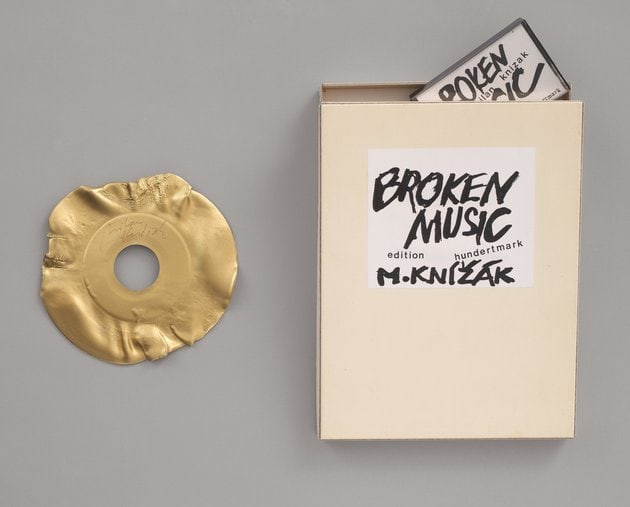
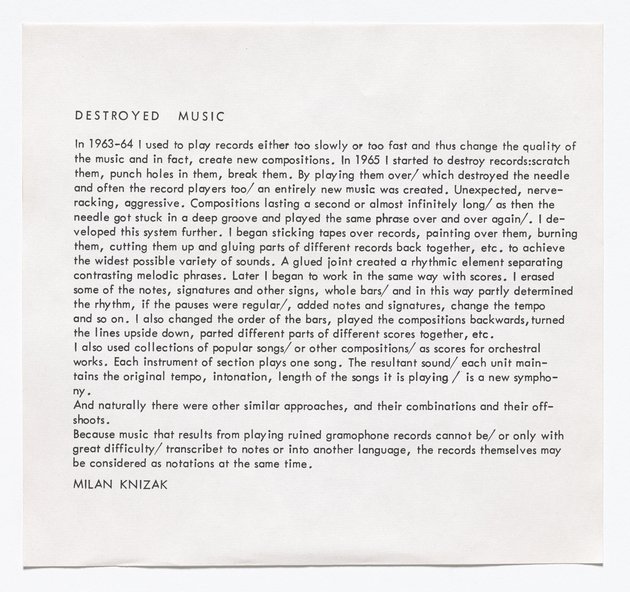
Milan Knížák’s oft-reproduced account of his first experiments with records, “Destroyed Music,” curiously echoes this rather odd nineteenth-century advertising promise. After having acquired a record player in 1963, Knížák recounts that he did not have enough money to buy more than a few records, with which he quickly grew bored, until he started playing them faster or slower than their original speeds and, eventually, manipulating them physically, occasionally causing the needle of the record player to skip across the record, or to get stuck in a groove. These alterations produced, he found, “an entirely new music.”3Milan Knížák, “Destroyed Music”, text insert included in the multiple Broken Music, 1983, melted LP, spray-painted gold, cassette, and two texts (English and German) in cardboard box, published by Galerie and Edition Hundertmark, Cologne. The Museum of Modern Art, New York. Acquired through the generosity of Lee and Ann Fensterstock in honor of their daughter Jane. Around the same time, in 1962 and 1963, Knížák installed ephemeral arrangements of everyday objects in public spaces, which at times evoked displays in junk stores, if not heaps of trash, and that involved performers, who interacted with the objects. The following year the group Aktual Art (renamed Aktual in 1965), whose members included Knížák, Jan Mach, Vit Mach, Sonia Švecová, and Jan Trtílek, began to organize public performances in Prague and other places in Czechoslovakia. While often playful in nature, there was a provocative element to their activities, as in Demonstration of Oneself (1964), in which a performer was to, among other things, stand still among a crowd of people, put on a special piece of clothing, lie down, read a book, tear out its pages, crumple and burn them, and then sweep up the ashes before changing back into ordinary clothing and leaving. This work and others like it suggest an interest in appropriating cultural detritus and a sense of aggression and disruptiveness vis-à-vis the accepted standards of behavior that also inform Knížák’s manipulation of vinyl records.
Knížák’s series of altered records, Destroyed Music (1963–79), exploits the potential of the vinyl disc as a physical object and of the stylus, which mechanically picks up and amplifies the minute details of its surface texture to produce sounds and structures that aggressively graft themselves onto the classical music and pop and dance tunes found on the original records. Knížák subjected the records to a number of procedures including breaking them; scratching, sanding, and burning their surfaces; applying paint to them; or cutting them up and then reassembling the pieces with strips of tape. The latter step allowed Knížák to rearrange the sequence of a recorded composition by putting the parts together in a different order, or to combine fragments from various records into one object. When the manipulated records are played, the strips of tape used to assemble the pieces produce a thumping sound each time the needle passes over them, providing a rudimentary beat to the bits of sound that alternate every few seconds. Cracks in the surface, smaller bits of tape, or daubs of paint cause the needle to skip between grooves or, alternatively, to get stuck, which results in a short sequence being played over and over until the needle mechanically jumps into a different groove or the tone arm is lifted.
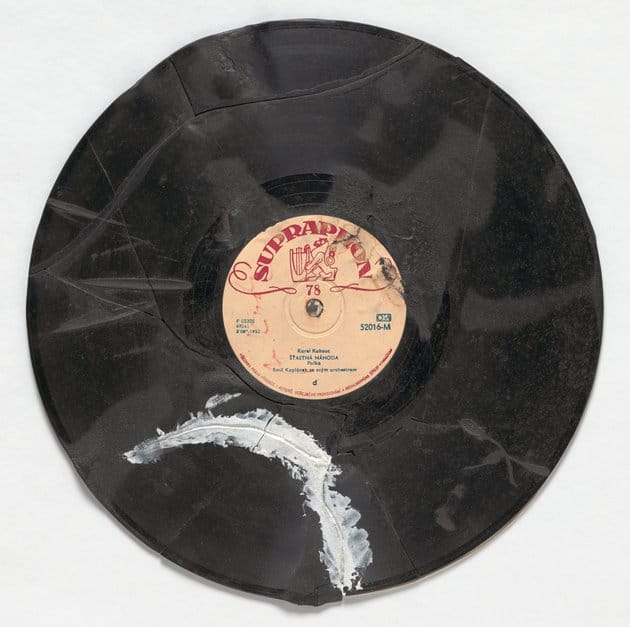
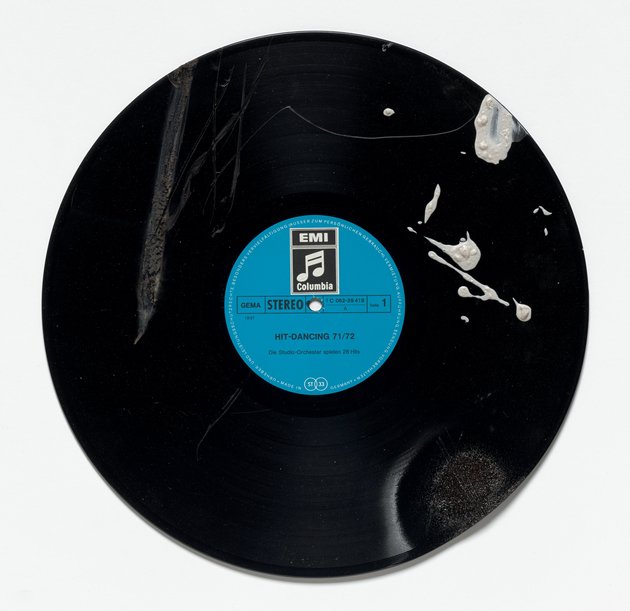
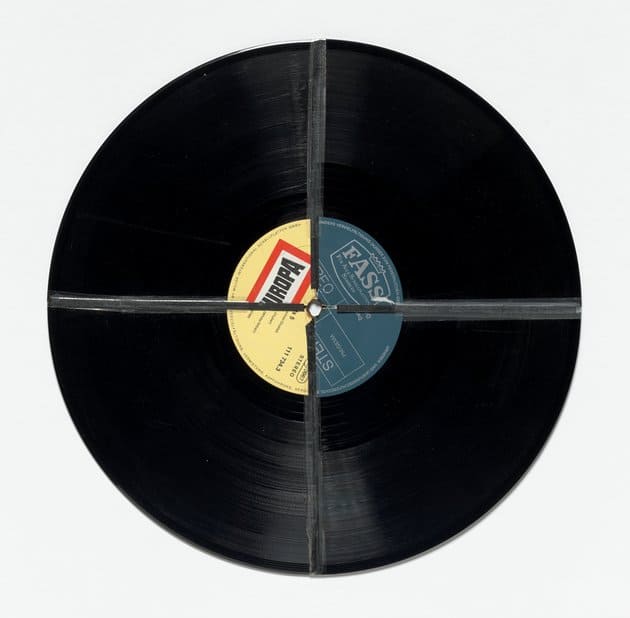
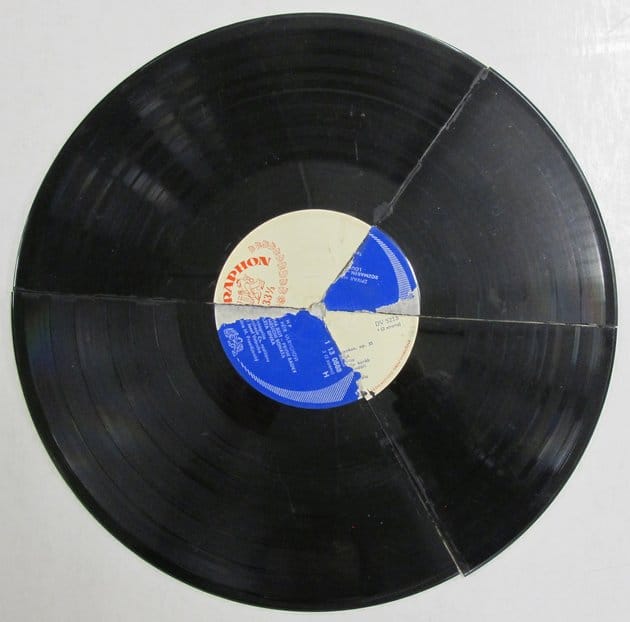
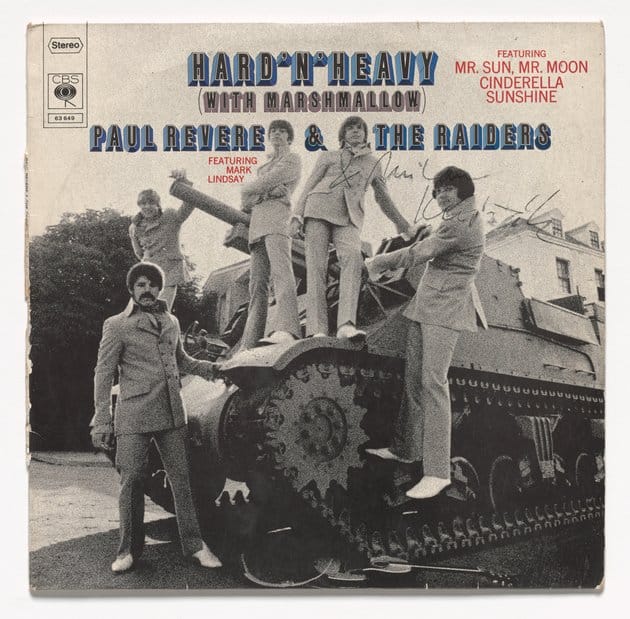
“Because,” Knížák concludes in his aforementioned text, “music that results from playing ruined gramophone records cannot be / or only with great difficulty / transcribed to notes or into another language, the records themselves may be considered as notations at the same time.”4Milan Knížák, “Destroyed Music”, text insert included in the multiple Broken Music, 1983, melted LP, spray-painted gold, cassette, and two texts (English and German) in cardboard box, published by Galerie and Edition Hundertmark, Cologne. The Museum of Modern Art, New York. Acquired through the generosity of Lee and Ann Fensterstock in honor of their daughter Jane. If Kittler emphasizes a record’s potential to register and store sounds that escape any form of written notation, for Knížák the manipulated records become a kind of score in their own right. However, they do not represent pitches and durations, but instead function as a kind of instruction, akin to John Cage’s scores that similarly incorporate elements of chance and indeterminacy.5John Cage performed in Prague in September 1964 (see David Crowley, “Sounding the Body Electric,” in Sounding the Body Electric: Experiments in Art and Music in Eastern Europe 1957–1984, ed. David Crowley and Daniel Muzyczuk [Łódź: Muzeum Sztuki, 2012], 9–103, and here, 49). In a text included in the 1980 publication Milan Knížák: Unvollständige Dokumentation/Some Documentary, 1961–1979 (Berlin: Edition Ars Viva!, n.d. [1980]) Knížák states that he was not familiar with Cage’s music in the 1960s but was aware of his writing. He would also have had access to information about Cage through his contacts in the international Fluxus network. Knížák started corresponding with George Maciunas, one of the central Fluxus organizers, in late 1965 or early 1966. For a more detailed account of Knížák’s exchange with Maciunas, and with Ken Friedman, see Tomáš Pospiszyl, “Milan Knížák and Ken Friedman: Keeping Together Manifestations in a Divided World”, (accessed November 11, 2015). Unlike Cage’s scores, and unlike Cage’s pieces scored for commercially available records, such as Imaginary Landscape No. 1(1939) or Imaginary Landscape No. 5 (1952), they are not meant to be interpreted by musicians, but rather by the record player itself, with the laws of physics determining the behavior of the needle as it moves across the surfaces of the records and reacts to the different kinds of physical manipulation that Knížák has subjected them to. As scores, Knížák’s manipulated records don’t represent acoustic events (unlike notes in sheet music, for example), but rather trigger them.
While the scratched, painted, and collaged records have, since the early 1970s, usually been treated as objects in their own right—small-scale, painterly collages made from bits of vinyl—they appear to have been originally conceived primarily for playback. It was not until 1979, however, that the first recordings of Knížák’s Destroyed Music were published. The Italian composer Walter Marchetti “assembled” them—as the liner notes phrase it—for a release on the Milan-based label Multhipla Records, which specialized in recordings by artists with releases including a compilation of Futurist music and poetry, the musical work of Marcel Duchamp, and pieces by Wolf Vostell. In 1983, Edition Hundertmark (Cologne) published Broken Music, an edition consisting of a sixty-minute cassette tape with recordings of Knížák’s altered records; a partially melted seven-inch record, spray-painted gold; and two cards printed with Knížák’s aforementioned text “Destroyed Music” in English and German. Rather than directly documenting the results of records being played back from beginning to end (i.e., being treated as scores “interpreted” by the record player), both releases feature collage-like compositions of brief sequences from different records, ranging in length between three and a half and just over nineteen minutes on the 1979 LP release, and running about thirty minutes each on the 1983 cassette. Bits of sound—a few seconds in length at most—alternate, skipping from drum roll to orchestral strings to voices speaking and singing to a strum on a guitar, each time accompanied by the metronomic thud of the needle passing the seam between different pieces of vinyl. The sounds mix with the crackling of worn vinyl and are distorted, albeit never beyond recognition, where the information stored in the grooves of the record has been covered or erased partially, for example by paint or sanding. The records are played back at various speeds which not always correspond to the speeds they were manufactured for, resulting in sounds slow down to elegiac sluggishness or sped up to almost cartoonish effect. The needle skids across the surface and skips between the grooves of the record, breaking down the structure of the original compositions into fragments that occasionally settle into instable rhythmic phrases but ultimately defy any sense of continuity. Even when the needle jumps back to the same song after having passed a piece of tape, it never picks up exactly where its course had been previously disrupted. Knížák emphasizes this effect when he cuts a record into four parts and reassembles the pieces in a different configuration.
The results of Knížák’s interventions into the smooth functionality of records and the structural logic of the music on them recall contemporaneous electronic music, in which the use of magnetic tape allowed for the extensive manipulation of sound—and the linearity and fidelity of any given recording—by cutting and splicing the tape, or changing its playback speed. But unlike the splicing of tape, Knížák’s alterations of vinyl records aggressively emphasize the physicality of the cut and of the record as a device for storing acoustic information. And, perhaps more importantly, Knížák was not working with professional studio equipment, to which he likely would not have had access, but instead with quotidian consumer-grade technology. Knížák’s physically aggressive repurposing of this technology lends itself to being read as a gesture of disrespect toward the values of the culture in which it is embedded—he takes a broad sweep that not only includes various styles of popular and classical music, but also hints at the political division between East and West: though some of the records he incorporated into his collages were Czech pressings, they are often juxtaposed with discs whose labels identify them as originating from West Germany.
While dissimilar in their results, Knížák’s later musical activities with the group Kapela Aktual, whose members only partially overlapped with the earlier Aktual group, are closely related in attitude to his experiments with manipulated records. As Knížák recounts in a text published in Milan Knížák: Unvollständige Dokumentation/Some Documentary 1961–1979, a collection of texts accompanying his 1980 exhibition at Galerie Ars Viva! in Berlin, he was approached in late 1967 by a group of young men from Mariánské Lázně who invited him to participate in a band they were planning to form and for which they needed a drummer, a singer, and songs.6Milan Knížák, “Gruppe Aktual,” in Milan Knížák: Unvollständige Dokumentation/Some Documentary, 1961–1979 (Berlin: Edition Ars Viva!, n.d. [1980]), 150-155, and here, 150. The group had barely mastered their instruments, and so they had difficulties playing cover versions of songs by popular rock bands, as was common at the time.7For an account of the Czech underground music scene in the 1960s and 1970s, see Ivan Martin Jirous, “A Report on the Third Czech Musical Revival” (1975), in Primary Documents: A Sourcebook for Eastern and Central European Art since the 1950s, ed. Laura Hoptman and Tomáš Pospiszyl (New York: The Museum of Modern Art 2002), 56–65. Knížák began writing compositions for the band that were, by his account, deliberately monotonous and mostly avoided conventional chords, although some of them were based on popular tunes. They are scored for various instruments, including guitars, drums, and wind instruments but also paper megaphones, sirens, washboards, a power drill, and amplifiers they assembled from parts salvaged from discarded tape recorders and radios. Footage of a privately held live concert by Kapela Aktual in the Czech village of Holubín, near Mariánské Lázně, documents the band’s nontraditional approach to handling their instruments, for example a member of the group plays a guitar by placing it on a table and rhythmically hitting the strings with a small object and his flat hand.8See https://www.youtube.com/watch?v=VDI8zRYO1fE (accessed November 13, 2015). In another scene, one of the band’s percussionists plays what appear to be two metal buckets, stoically striking them with one mallet. The music on the accompanying soundtrack, which is not synchronous with the images, is mostly harsh and noisy, devoid of melody and conventional song structure, with half-sung, half-screamed vocals and a shrill flute undergirded by percussive, repetitive guitar playing. Other recordings from that time, compiled on the 2003 release Atentát Na Kulturu (An Assault on Culture), include more traditional songs, but they are nonetheless embedded in passages of (seemingly) improvised “free-form” noise.
It is not insignificant that the concert in Holubín was held privately and took place in a small village. Knížák recounts several instances when the band’s live performances were interrupted or banned by the police, forcing them to find places where they could perform in secret. It is against the background of a repressive political climate that both Knížák’s altered vinyl records and Kapela Aktual’s music enacted a nonconformist “assault on culture”—with the notion of noise, as that which belies any traditional form of musical notation, playing a central role.
- 1David Grubbs, Records Ruin the Landscape: John Cage, the Sixties, and Sound Recording (Durham and London: Duke University Press 2014), 95-97.
- 2Friedrich Kittler, Gramophone, Film, Typewriter, trans. Geoffrey Winthrop-Young and Michael Wutz (Stanford: Stanford University Press, 1999; originally published in German as Grammophon Film Typewriter, Berlin: Brinkmann & Bose 1986), 35.
- 3Milan Knížák, “Destroyed Music”, text insert included in the multiple Broken Music, 1983, melted LP, spray-painted gold, cassette, and two texts (English and German) in cardboard box, published by Galerie and Edition Hundertmark, Cologne. The Museum of Modern Art, New York. Acquired through the generosity of Lee and Ann Fensterstock in honor of their daughter Jane.
- 4Milan Knížák, “Destroyed Music”, text insert included in the multiple Broken Music, 1983, melted LP, spray-painted gold, cassette, and two texts (English and German) in cardboard box, published by Galerie and Edition Hundertmark, Cologne. The Museum of Modern Art, New York. Acquired through the generosity of Lee and Ann Fensterstock in honor of their daughter Jane.
- 5John Cage performed in Prague in September 1964 (see David Crowley, “Sounding the Body Electric,” in Sounding the Body Electric: Experiments in Art and Music in Eastern Europe 1957–1984, ed. David Crowley and Daniel Muzyczuk [Łódź: Muzeum Sztuki, 2012], 9–103, and here, 49). In a text included in the 1980 publication Milan Knížák: Unvollständige Dokumentation/Some Documentary, 1961–1979 (Berlin: Edition Ars Viva!, n.d. [1980]) Knížák states that he was not familiar with Cage’s music in the 1960s but was aware of his writing. He would also have had access to information about Cage through his contacts in the international Fluxus network. Knížák started corresponding with George Maciunas, one of the central Fluxus organizers, in late 1965 or early 1966. For a more detailed account of Knížák’s exchange with Maciunas, and with Ken Friedman, see Tomáš Pospiszyl, “Milan Knížák and Ken Friedman: Keeping Together Manifestations in a Divided World”, (accessed November 11, 2015).
- 6Milan Knížák, “Gruppe Aktual,” in Milan Knížák: Unvollständige Dokumentation/Some Documentary, 1961–1979 (Berlin: Edition Ars Viva!, n.d. [1980]), 150-155, and here, 150.
- 7For an account of the Czech underground music scene in the 1960s and 1970s, see Ivan Martin Jirous, “A Report on the Third Czech Musical Revival” (1975), in Primary Documents: A Sourcebook for Eastern and Central European Art since the 1950s, ed. Laura Hoptman and Tomáš Pospiszyl (New York: The Museum of Modern Art 2002), 56–65.
- 8See https://www.youtube.com/watch?v=VDI8zRYO1fE (accessed November 13, 2015).
